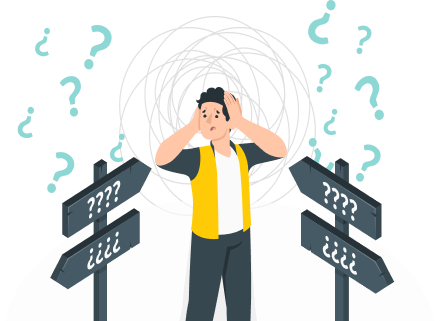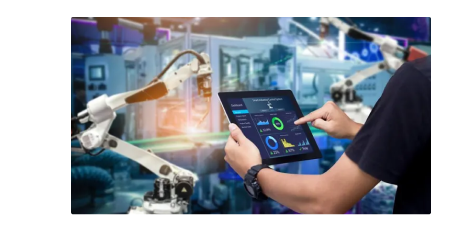#TakeCharge with #Aimshala
How make a career in Aerospace Spacecraft Design Engineer
A career as a Spacecraft Design Engineer in the Aerospace industry provides the opportunity to work on the cutting edge of technology, contributing to the design and development of spacecraft for various applications, including satellites, space exploration, and defense. To pursue this career path, individuals typically need a strong academic foundation in aerospace engineering, mechanical engineering, or a related field. A bachelor's degree is essential, followed by potential specialization through master's or doctoral programs. Gaining practical experience through internships, co-op programs, or working on engineering projects enhances employability. Networking with professionals in the aerospace field and staying updated with the latest advancements in spacecraft technology are also crucial. With a combination of education, experience, and a passion for aerospace, one can build a rewarding career dedicated to advancing spacecraft design.
Career in Aerospace Spacecraft Design Engineer
What are the roles and responsibilities in Aerospace Spacecraft Design Engineer?
- Designing Spacecraft : Spacecraft Design Engineers create detailed designs for spacecraft, ensuring they meet specific mission requirements and safety standards.
- Conducting Simulations : They perform simulations to test the performance of spacecraft designs under various conditions, identifying potential issues before production.
- Collaborating with Teams : Spacecraft Design Engineers work closely with other engineers, scientists, and project managers to integrate various systems and components.
- Testing Prototypes : They oversee the testing of spacecraft prototypes, analyzing performance data to refine designs and ensure reliability.
- Documenting Designs : Spacecraft Design Engineers maintain detailed documentation of designs, specifications, and testing results for regulatory compliance and future reference.
What education is required to study Aerospace Spacecraft Design Engineer
Check out the dates of the total number of candidates who have appeared in the CUET 2022 exam from the below table.
Stream |
Graduation |
After Graduation |
After Post Graduation |
|
|
Path 1 |
Completion of high school with a focus on mathematics, physics, and engineering principles. |
Bachelor of Science in Aerospace Engineering or related fields. |
Master's degree in Aerospace Engineering or specialized fields such as Space Systems Engineering. |
Ph.D. in Aerospace Engineering for those pursuing research or academic careers. |
|
Path 2 |
Completion of high school with emphasis on engineering or vocational training. |
Bachelor's degree in Mechanical Engineering or related fields. |
Master's degree in Aerospace Engineering or related fields. |
Certifications in specialized aerospace technologies or project management. |

Feeling unsure about
your future?
Let's find the perfect career path for you!
with AI-powered career
guidance

What are the key skills required for Aerospace Spacecraft Design Engineer
- Analytical Skills - These skills are crucial for interpreting complex data and making informed engineering decisions.
- Communication Skills - Effective communication is vital for sharing design concepts and collaborating with team members and stakeholders.
- Problem-Solving Skills - The ability to identify engineering challenges and develop innovative solutions is essential for success.
- Technical Skills - Proficiency with CAD software and engineering simulation tools is important for designing and analyzing spacecraft.
- Project Management Skills - Managing engineering projects efficiently, including timelines and budgets, is key to successful outcomes in spacecraft design.
What are the career opportunities in Aerospace Spacecraft Design Engineer?
- Aerospace Engineer - Aerospace Engineers design and develop aircraft, spacecraft, and related systems, focusing on performance and safety.
- Systems Engineer - Systems Engineers manage the integration of complex systems within aerospace projects, ensuring all components work together effectively.
- Propulsion Engineer - Propulsion Engineers specialize in the design and testing of propulsion systems for spacecraft and launch vehicles.
- Avionics Engineer - Avionics Engineers design and maintain electronic systems used in aerospace applications, including navigation and communication systems.
- Mission Planner - Mission Planners develop strategies for space missions, coordinating the technical and operational aspects of spacecraft operations.
What is the salary and demand for Aerospace Spacecraft Design Engineer?
- Salary Overview - The typical salary for Spacecraft Design Engineers ranges from $70,000 for entry-level positions to over $120,000 for experienced professionals, with variations based on education and location.
- Regional Salary Variations - Salaries can vary significantly by region; for example, Spacecraft Design Engineers in aerospace hubs or urban areas may earn more than those in rural settings.
- Current Job Market Demand - The demand for Spacecraft Design Engineers is growing due to advancements in space exploration, satellite technology, and defense applications.
- Future Demand Projections - Future demand for Spacecraft Design Engineers is expected to rise as space missions expand and the aerospace industry continues to innovate.
Leading companies for careers in Aerospace Spacecraft Design Engineer

NASA

SpaceX

Boeing

Lockheed Martin

Northrop Grumman

Raytheon Technologies

Blue Origin

Virgin Galactic
What are the best colleges for Aerospace Spacecraft Design Engineer in India?
Undergraduate
College |
Location |
Website |
|
Indian Institute of Technology, Bombay |
Mumbai |
https://www.iitb.ac.in |
|
Indian Institute of Technology, Kharagpur |
Kharagpur |
https://www.iitkgp.ac.in |
|
Indian Institute of Space Science and Technology |
Thiruvananthapuram |
https://www.iist.ac.in |
|
Birla Institute of Technology and Science |
Pilani |
https://www.bits-pilani.ac.in |
|
Punjab Engineering College |
Chandigarh |
https://pec.ac.in |
Postgraduate
College |
Location |
Website |
|
Indian Institute of Technology, Bombay |
Mumbai |
https://www.iitb.ac.in |
|
Indian Institute of Space Science and Technology |
Thiruvananthapuram |
https://www.iist.ac.in |
|
Indian Institute of Technology, Kharagpur |
Kharagpur |
https://www.iitkgp.ac.in |
|
Indian Institute of Technology, Madras |
Chennai |
https://www.iitm.ac.in |
|
National Institute of Technology, Tiruchirappalli |
Tiruchirappalli |
https://www.nitt.edu |
What are the best colleges for Aerospace Spacecraft Design Engineer in Abroad?
College |
Location |
Website |
|
Massachusetts Institute of Technology |
Cambridge, Massachusetts, USA |
https://www.mit.edu |
|
California Institute of Technology |
Pasadena, California, USA |
https://www.caltech.edu |
|
Wageningen University & Research |
Wageningen, Netherlands |
https://www.wur.nl |
|
University of Michigan |
Ann Arbor, Michigan, USA |
https://umich.edu |
|
University of Cambridge |
Cambridge, United Kingdom |
https://www.cam.ac.uk |
What are the top entrance exams in India for pursuing a career in Aerospace Spacecraft Design Engineer
College |
Tentative Date |
UG/PG |
Important Elements |
Website |
|
Indian Institute of Technology, Bombay |
April |
Postgraduate |
Aerospace Engineering, Mathematics, and General Knowledge. |
https://www.iitb.ac.in |
|
Indian Institute of Space Science and Technology |
May |
Undergraduate |
Physics, Mathematics, and Chemistry. |
https://www.iist.ac.in |
|
Birla Institute of Technology and Science |
June |
Undergraduate |
Mathematics, Physics, and Chemistry. |
https://www.bits-pilani.ac.in |
|
Indian Institute of Technology, Kharagpur |
April |
Postgraduate |
Aerospace Engineering, Mathematics, and General Knowledge. |
https://www.iitkgp.ac.in |
|
University of Michigan |
January |
Postgraduate |
Engineering Fundamentals, Mathematics, and Analytical Skills. |
https://umich.edu |
Pros & Cons of a Career in Aerospace Spacecraft Design Engineer
Pros
- Spacecraft Design Engineers contribute to groundbreaking advancements in space exploration, making their work highly impactful and rewarding.
- The aerospace industry offers competitive salaries, especially for those with advanced degrees and specialized skills.
- Professionals in this field are at the forefront of technological innovation, contributing to national security and scientific discovery.
- The career provides opportunities for continuous learning and advancement in a rapidly evolving field.
Cons
- The job can be demanding with long hours, particularly during project deadlines or testing phases.
- Some roles may require extensive travel to testing sites or remote locations, which can be physically and mentally taxing.
- Funding uncertainties in research and development can lead to job instability or limited resources.
- The work can sometimes be isolating, particularly for those engaged in extensive project work away from collaborative environments.
Did you find this information helpful?


Report
0 out of 0 found this helpful


